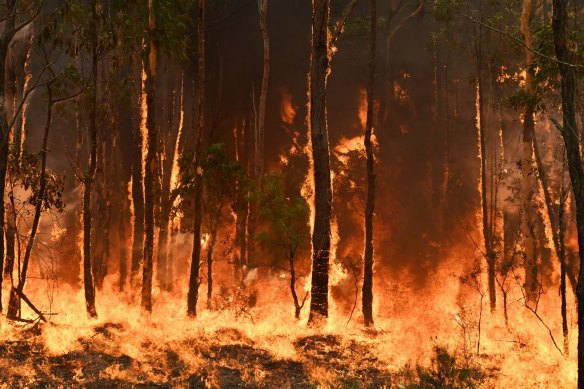From Evaluation to Activity: Using Your BAL Report to Reduce Bushfire Ris
From Evaluation to Activity: Using Your BAL Report to Reduce Bushfire Ris
Blog Article
Ensuring Shrub Fire Protection With Proper BAL Report Evaluation
In the world of bush fire security, the precise evaluation of Bushfire Assault Level (BAL) reports stands as a keystone for protecting buildings versus the destructive effect of wildfires. With environmental aspects and residential or commercial property features playing substantial duties in figuring out the degree of danger, an extensive understanding of BAL scores comes to be vital.
Recognizing Bushfire Strike Level (BAL)
In the world of bushfire defense, comprehending the Bushfire Strike Degree (BAL) is extremely important for ensuring effective mitigation strategies. Understanding the BAL score of a residential property is critical for residential or commercial property proprietors, home builders, and policymakers to implement ideal measures to safeguard against bushfire risks.

Importance of BAL Record Evaluation
A crucial aspect in bushfire security planning includes the thorough analysis of BAL reports to assess the potential dangers and figure out appropriate mitigation methods. BAL reports provide vital details concerning the potential effect of bushfires on a property based upon numerous variables such as plant life kind, distance to potential fire dangers, and incline of the land. Examining these reports with precision is extremely important in developing reliable bushfire defense actions customized to the details threat account of a building.
Applying Fire Security Steps
Executing effective fire defense actions is vital for securing residential properties in bushfire-prone locations. Among the primary means to improve fire protection is by producing defensible space around structures. This involves clearing up combustible vegetation, such as completely dry leaves and branches, within a particular span of the home. Additionally, mounting fire-resistant roof covering materials can help reduce the risk of cinders igniting the roofing throughout a bushfire. Appropriately maintained screens and rain gutters are additionally necessary to protect against debris accumulation that can fuel a fire.
In addition, having a properly maintained and web sufficient water supply, such as a storage tank or pool, can assist firefighters in their efforts to protect the residential or commercial property. BAL Report. In general, implementing a combination of these fire protection steps can considerably enhance the chances of protecting residential properties throughout bushfire occasions.
Mitigating Risks in Fire-Prone Locations
To strengthen residential properties against bushfire dangers, a strategic focus on mitigating risks in fire-prone areas is imperative. One critical aspect of danger reduction is preserving defensible area around properties by removing combustible vegetation, guaranteeing ample spacing in between structures and trees, and employing fire-resistant landscaping practices.
Moreover, creating or retrofitting buildings with fireproof materials and making certain proper upkeep of roof coverings, gutters, and outside cladding can dramatically improve the residential property's strength to bushfires. Establishing and practicing a bushfire emergency strategy with all passengers, consisting of emptying procedures and interaction methods, is also vital in mitigating threats successfully. By adopting an aggressive technique to run the risk of mitigation in fire-prone locations, property proprietors can better shield their assets and boost general bushfire preparedness.
Ensuring Property Safety And Security and Durability
Ensuring the security and resilience of buildings in fire-prone areas requires an unfaltering dedication to durable precautionary procedures and tactical preparation. Residential property security starts with executing efficient steps to reduce fire dangers.
Durability, on the other hand, involves the capability of a building to endure and recoup from a bushfire. By proactively dealing with these why not try these out elements, property proprietors can better safeguard their assets and loved ones from the risk of bushfires.
Final Thought
In final thought, making certain bushfire security with appropriate BAL report evaluation is critical for understanding the level of threat postured by bushfires and applying necessary fire defense procedures. By reducing threats in fire-prone areas and making certain building security and resilience, individuals and communities can better plan for and react to bushfire events. It is essential to focus on fire safety and security measures to safeguard lives and building in these high-risk settings.
In the realm of bush fire security, the precise analysis of Bushfire Assault Degree (BAL) reports stands as a cornerstone for securing residential properties versus the damaging effect of wildfires (BAL Report). Recognizing the BAL rating of a residential property is vital for building owners, building contractors, and policymakers to carry out proper procedures to secure versus bushfire hazards

BAL records give crucial information concerning the potential influence of bushfires on a property based on numerous elements such as greenery type, range to prospective read more fire risks, and slope of the land (BAL Report). On the whole, executing a combination of these fire protection measures can significantly boost the possibilities of safeguarding properties throughout bushfire events
Report this page